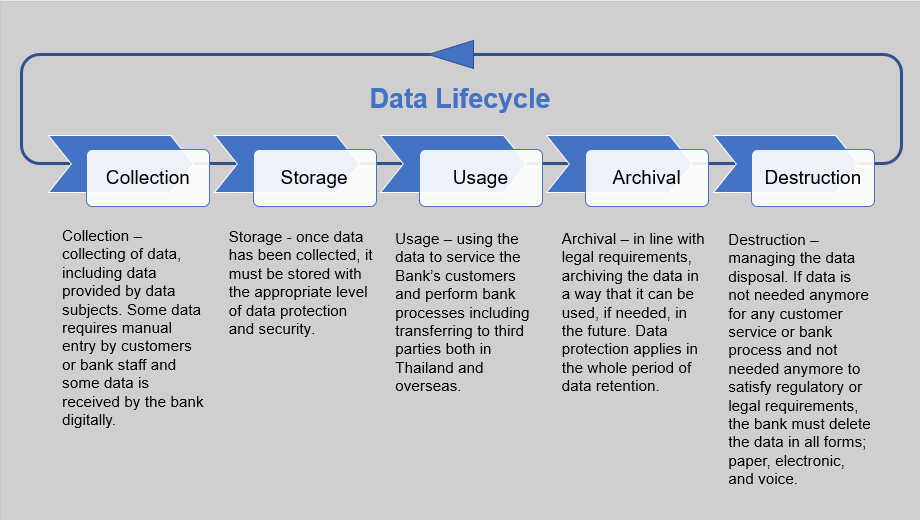The Importance of Effective Data Devastation Practices in Shielding Sensitive Info and Ensuring Computer System Safety And Security
In an age where information violations are increasingly usual, the value of reliable information devastation techniques can not be overstated. Organizations face substantial dangers when delicate details is improperly dealt with, potentially resulting in unapproved gain access to and extreme financial effects. Carrying out durable information devastation approaches not just minimizes these risks yet also lines up with lawful compliance demands, guaranteeing that companies support their reputation and foster customer trust fund. The question stays: what specific methods can be used to enhance these methods, and exactly how can companies successfully incorporate them into their overall cybersecurity framework?
Understanding Information Destruction
Understanding information destruction is critical in today's electronic landscape, where delicate information can conveniently be endangered. Efficient data destruction involves not just deleting documents but guaranteeing that data is irretrievable through thorough approaches. This process is important for organizations that handle private client details, copyright, or interior records, as any breach can cause severe financial and reputational effects.
Data damage includes different methods, consisting of shredding physical media, degaussing magnetic storage space tools, and utilizing software-based services that overwrite information numerous times. Each approach serves a details purpose and should straighten with the level of sensitivity of the details being taken care of. As an example, physical devastation is usually chosen for disk drives consisting of extremely personal information, while software application techniques could be adequate for less sensitive information.
In addition, sticking to industry criteria and policies, such as the General Information Protection Regulation (GDPR) or the Medical Insurance Mobility and Responsibility Act (HIPAA), is imperative for conformity and to minimize lawful dangers. Organizations should develop a robust information devastation policy, train employees on finest practices, and regularly investigate their treatments to guarantee that all delicate info is thrown away firmly and properly.
Dangers of Inadequate Practices
Inadequate information damage techniques expose companies to significant threats that can have far-ranging repercussions. When delicate details is not effectively disposed of, it stays susceptible to unapproved gain access to, which can result in data violations and identity theft. Such occurrences not only compromise the safety of individuals but also tarnish the organization's online reputation, causing a loss of client depend on and prospective financial effects.
Furthermore, regulative compliance is progressively stringent in numerous sectors. Failing to abide by information devastation laws can result in substantial fines and lawsuits versus companies. These fines can draw away and strain financial resources interest from core business operations.
Additionally, the abuse of recurring information can lead to copyright burglary or corporate espionage, jeopardizing affordable benefits (data destruction). The effect of insufficient information damage expands past prompt economic losses; it can likewise cause long-lasting damage to brand integrity and market setting

Organizations should acknowledge that information security is not exclusively concerning protecting against violations; it likewise encompasses the liable monitoring of information throughout its lifecycle. Disregarding effective data damage methods can have catastrophic implications, underscoring the necessity for durable steps to alleviate these threats.
Best Practices for Data Damage
Executing efficient data damage techniques is essential for securing sensitive info and keeping conformity with regulative criteria. Organizations needs to embrace a multi-faceted technique to make sure that data is irretrievable, consequently avoiding unauthorized accessibility and prospective breaches.
First, information need to be categorized based upon level of sensitivity, allowing companies to apply ideal devastation approaches tailored to the degree of danger. For digital data, utilizing software-based data-wiping tools that abide by sector criteria can efficiently overwrite existing information. Physical damage approaches, such as shredding or degaussing, are vital for gadgets that keep delicate info, guaranteeing total eradication.
Establishing a clear data retention policy is vital, outlining how long various types of check my reference information must be retained prior to destruction. Normal audits of information storage space systems are likewise required to identify obsolete or unneeded information needing elimination.
Additionally, training workers on the importance of information devastation and the details methods to comply with fosters a society of protection within the organization. Lastly, keeping paperwork of information devastation processes supplies responsibility and sustains conformity with external policies and internal policies. By adhering to these ideal techniques, organizations can dramatically reduce the dangers related to information exposure.
Legal and Conformity Factors To Consider

Failure to adhere to these regulations can lead to extreme fines, including substantial penalties and reputational damages. Organizations should execute a robust information devastation policy that lines up with these lawful frameworks and gives clear standards on the appropriate approaches of data disposal, whether physical shredding or digital wiping.
In addition, maintaining documentation of data destruction tasks is crucial for demonstrating compliance during audits or assessments. By prioritizing lawful and conformity factors to consider, companies can boost their information protection stance and foster trust with stakeholders and clients, ultimately contributing to a much more secure data administration setting.
Benefits of Effective Information Damage
Efficient data devastation methods extend past plain conformity; they supply substantial advantages to organizations that prioritize them. By ensuring that sensitive details is irretrievably damaged, companies alleviate the threat of data violations and the possible financial effects connected with them. This proactive technique not only safeguards versus unapproved access yet likewise enhances the general credibility of the company in the eyes of stakeholders and clients.
Applying durable information damage methods, such as physical destruction of storage gadgets or sophisticated data wiping methods, adds to the conditioning of a company's cybersecurity pose. data destruction. It decreases the possibility of copyright theft and shields exclusive info, thus preserving an one-upmanship on the market

Final Thought
In conclusion, Discover More Here effective information damage practices are essential for securing delicate info and improving general computer safety. Ultimately, a dedication to durable data destruction methods fosters a culture of duty, consequently reinforcing an organization's cybersecurity posture and preserving client trust fund.
